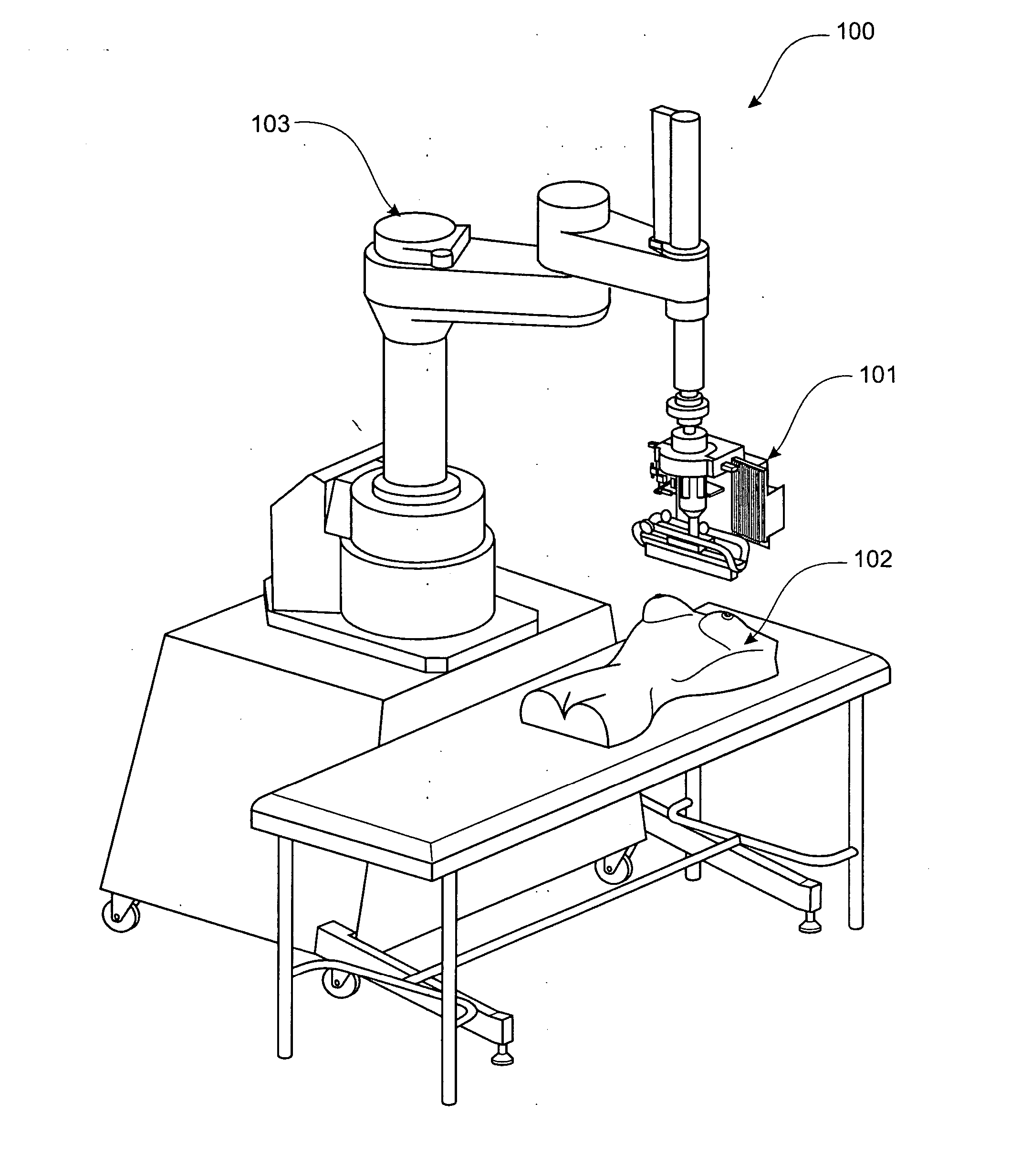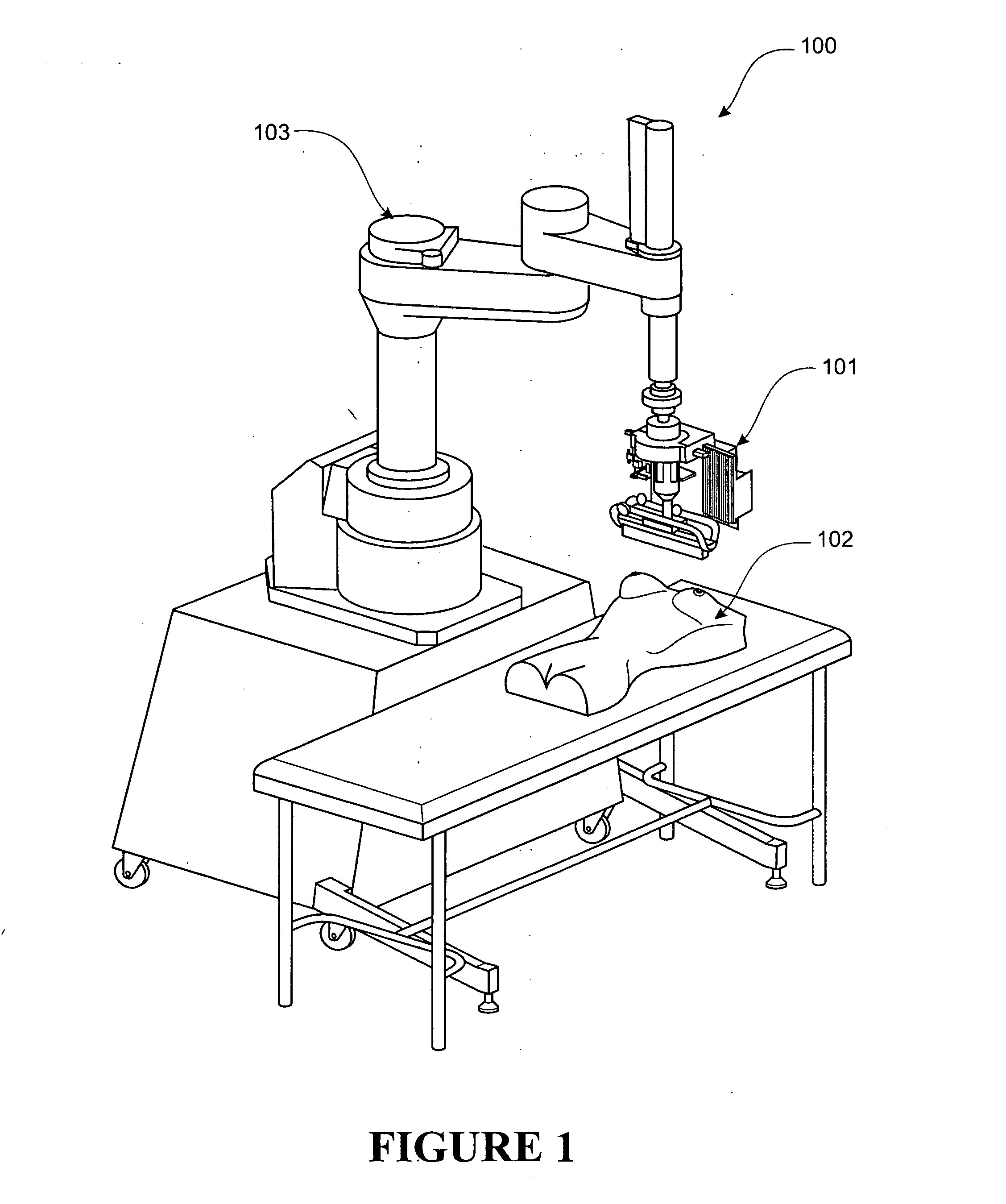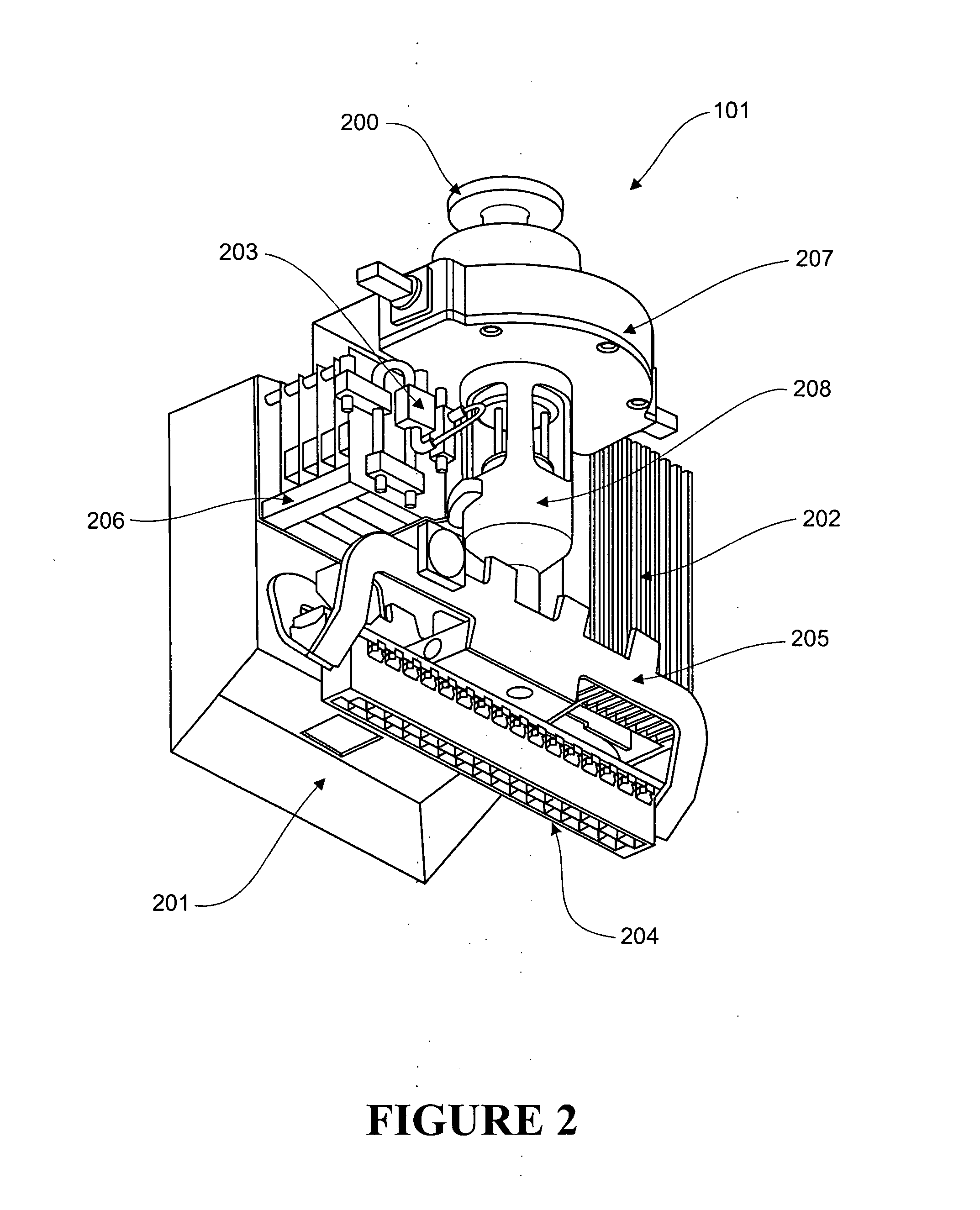Imaging system
a technology of imaging system and image, applied in the field of imaging system, can solve the problems of x-ray mammography with a number of associated limitations and drawbacks, difficult to determine the true three-dimensional (3d) location of any suspicious features, and women with silicone breast implants are also at risk of implant ruptur
- Summary
- Abstract
- Description
- Claims
- Application Information
AI Technical Summary
Benefits of technology
Problems solved by technology
Method used
Image
Examples
Embodiment Construction
[0064] The preferred form imaging system of the invention is a breast cancer screening tool and is arranged to scan a patient's breasts with microwave radiation in order to generate 3D radar images of each breast which can be examined for suspicious features such as malignant tumours. There is a large difference in complex permittivity between healthy and malignant breast tissue and this leads to greater scattered field amplitudes from malignant tumours embedded in healthy tissue which show up readily in a microwave image of scattered field intensity. For example, the real part of complex permittivity (the dielectric constant) for a malignant tumour is of the order of 50 at a frequency of 10 GHz whereas healthy tissue has a value of about 9. Hence, radar images are suited to breast tumour detection since the high permittivity contrast between malignant and healthy tissue translates to high-contrast images.
[0065] The imaging system generates 3D radar images based on the intensity of...
PUM
 Login to View More
Login to View More Abstract
Description
Claims
Application Information
 Login to View More
Login to View More - R&D
- Intellectual Property
- Life Sciences
- Materials
- Tech Scout
- Unparalleled Data Quality
- Higher Quality Content
- 60% Fewer Hallucinations
Browse by: Latest US Patents, China's latest patents, Technical Efficacy Thesaurus, Application Domain, Technology Topic, Popular Technical Reports.
© 2025 PatSnap. All rights reserved.Legal|Privacy policy|Modern Slavery Act Transparency Statement|Sitemap|About US| Contact US: help@patsnap.com



